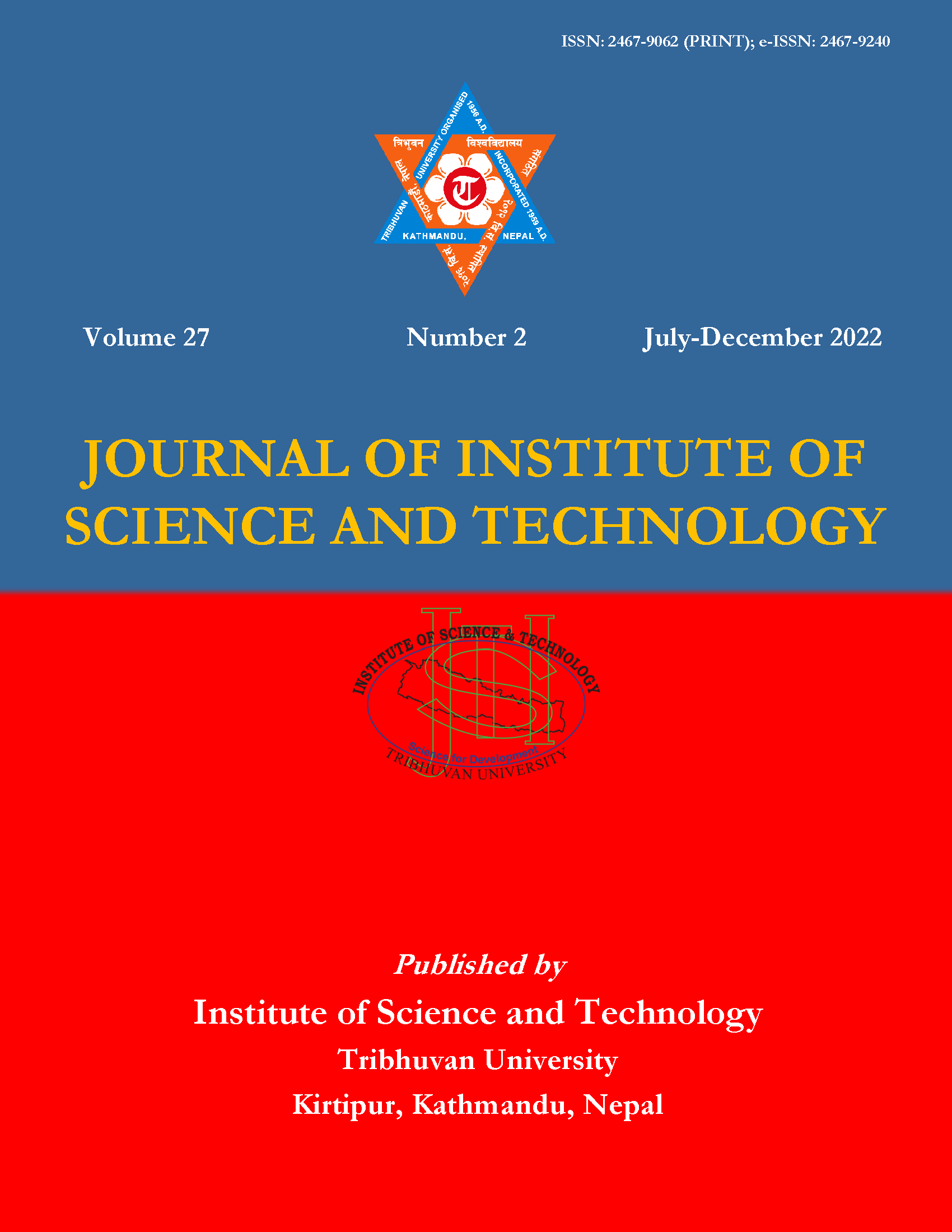Characterizing the Effects of Friction Angles on Earth Pressures in the Flow of Granular Mass along Down-slope and Cross-slope in a Rough Incline
DOI:
https://doi.org/10.3126/jist.v27i2.48880Keywords:
Active and passive earth pressures, internal angle of friction, basal angle of frictionAbstract
The tendency of the sliding mass to deform or deposit during the flow is dictated by the earth pressure coefficient (K) in the dynamics of a finite mass of cohesionless granular material discharged from rest on a rough inclined plane. When the flow’s velocities along the x and y-axes are decreasing, K=K_(y pas)^(x pas), the flow becomes convergent, and depositional behavior appears. On the other hand, if the flow velocity is increasing along x-axis but decreasing along y-axis, 〖K=K〗_(y pas)^(x act) and the flow is divergent and hence mass spreads. For K=K_(y act)^(x pas) and K=K_(y pas)^(x pas), the flow is neither convergent nor divergent, it remains constant throughout the domain. The mathematical relationship provided here and the associated 2D and 3D representation demonstrate how the internal angle (ϕ) and basal angle (δ) of frictions have a significant impact on the earth pressure coefficient in the dynamics of dry granular mass along a rough plane. The mathematical correlations for the soil mechanics are discussed along with these coefficients.
Downloads
Downloads
Published
How to Cite
Issue
Section
License
Copyright (c) 2022 Institute of Science and Technology, T.U.

This work is licensed under a Creative Commons Attribution-ShareAlike 4.0 International License.
The views and interpretations in this journal are those of the author(s). They are not attributable to the Institute of Science and Technology, T.U. and do not imply the expression of any opinion concerning the legal status of any country, territory, city, area of its authorities, or concerning the delimitation of its frontiers of boundaries.
The copyright of the articles is held by the Institute of Science and Technology, T.U.




